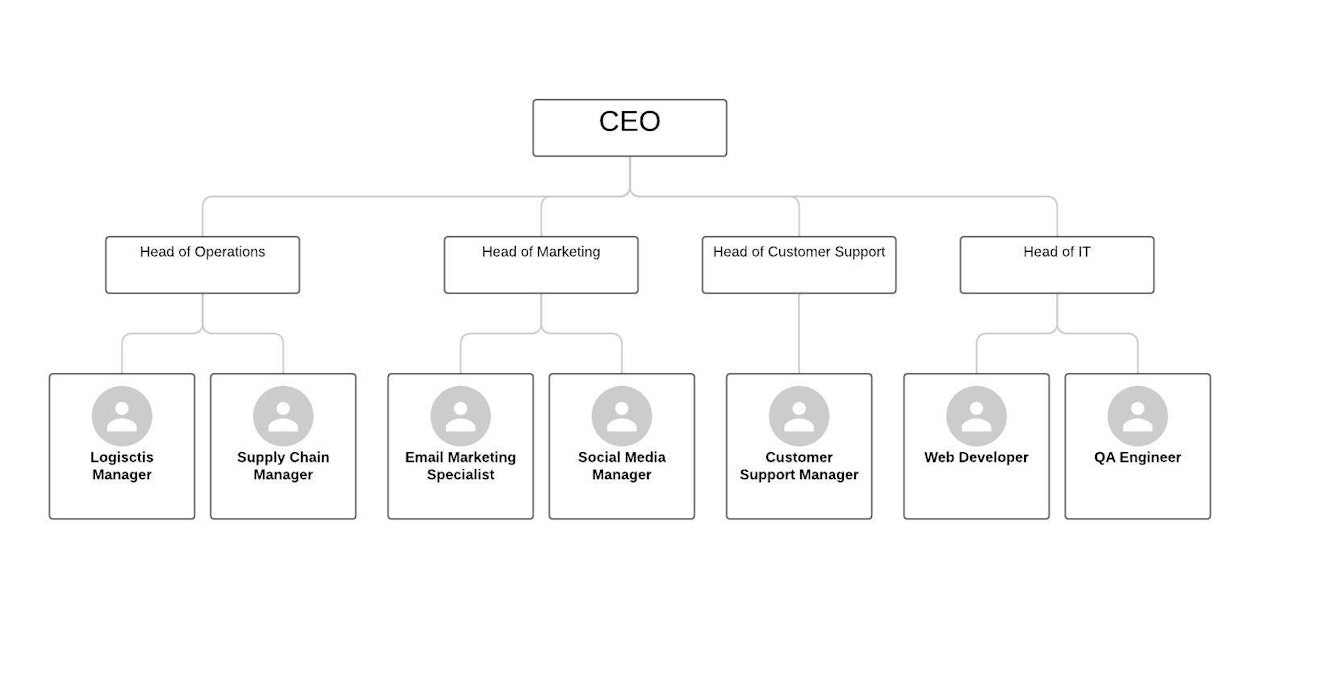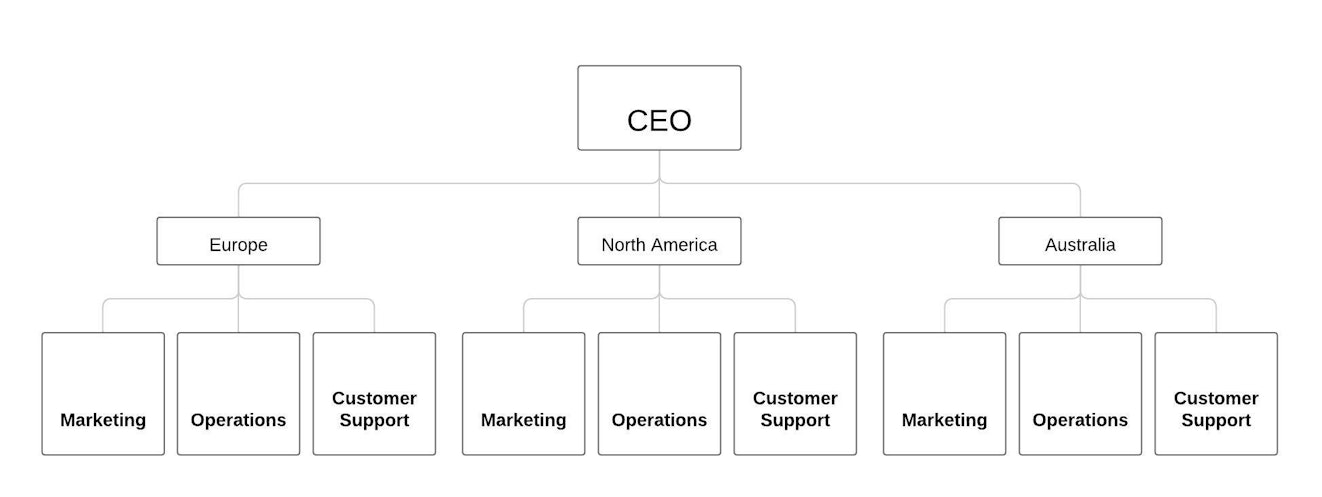Ecommerce brands can seemingly take off overnight. When all it takes is a viral video or a few successful ads to skyrocket your growth, you need to have a high-performing team in place that’s ready to deliver.
To build a brand that lasts, you need to find an ecommerce team structure that enables great collaboration and smooth scaling.
In this article, we’ll dive into the details of structuring your ecommerce team for maximum efficiency and profit.
Let’s start with the essential roles you'll need to fill.
Must-have roles for your ecommerce store
Running an ecommerce business is like juggling a dozen balls at once.
It requires a wide range of skills, from managing inventory to delighting customers with outstanding service to making strategic marketing investments.
Each of these tasks comes with its unique set of challenges. When you’re building out your ecommerce team, each team member needs to contribute to tackling the many challenges you’re likely to face.
Every company is different, but there are a number of essential roles that every ecommerce organization needs to fill to build a solid foundation for success:
Marketing manager: Getting your brand out there is half the battle. Marketing managers lead the charge, drawing in potential customers and driving sales through smart ads, email campaigns, engaging content, affiliate programs, and social media promotions.
Product manager: Whether you’re designing your own products or opting for a drop-shipping approach, you'll need someone to curate and optimize your product lineup, to manage suppliers and pricing strategies, and to keep your product offerings aligned with customer demand and market trends.
Customer service: Your customer support department is the face of your business, bridging the gap between your brand and your customers. A positive support experience can turn a one-time visitor into a lifelong fan, so hiring for your customer service team is crucial for long-term success.
IT specialists: No ecommerce company can survive without technical specialists. They work behind the scenes to build your website, manage integrations, and optimize page performance.
Inventory manager: Warehouses are at the core of ecommerce operations, and you'll need a diligent partner on your team to keep stock levels in check, handle order fulfillment, and manage returns and replacements efficiently.
Logistics manager: Working closely with carriers and international shipping authorities, logistics managers ensure that orders don't go missing and that they reach customers' doorsteps right on time and in perfect condition.
These roles are just the tip of the iceberg. Like any business, growing ecommerce companies also need accountants, HR managers, legal experts, office managers, and more.
With each role, you’ll need to think through whether you want to hire internally or outsource the related responsibilities. Both options have pros and cons. For instance, outsourcing customer service is common for ecommerce companies. It can enable faster scaling and can let you take advantage of your outsourcing partner’s expertise, but poor outsourcing can also reduce the quality of your customer experience.
The right approach depends on your strengths and your budget.
Key factors for choosing the right team structure
There's no one-size-fits-all formula for how to structure an ecommerce team.
A small ecommerce team’s structure may develop organically, with loosely-defined roles allowing for agility and flexibility. But as your business matures, there comes a point where you need a more organized approach.
Say it with me: Organizational charts aren’t inherently a bad thing.
An org chart can create clarity and enable growth by making it easy to understand who does what and how each team in your ecommerce organization interacts.
Whether you're building a team from scratch or giving your existing team a makeover, you should take the company’s lifecycle, your strategy, and your competitive environment into account.
Company size and budget
Your team’s size and structure are typically closely tied to your budget.
With a smaller budget, consider the “lean and mean” approach to your team structure. A flat team structure with little hierarchy can enable fast decision-making. For instance, it might make sense for everyone to report to a single leader or the business owner as you get started.
On the flip side, larger organizations tend to evolve into more complex multi-level hierarchies, requiring thoughtful planning and coordination. If you launch new product lines or expand into new markets, you may need to restructure your teams accordingly.
Business goals
When planning your team structure, it's crucial to have a clear goal in mind. Your team’s structure should align with and enable your core objectives.
If the goal is to scale quickly, optimize your team’s structure to reduce bottlenecks and push decision-making further down the hierarchy
If your competition’s customer service is lackluster and you’re aiming to make customer service your primary competitive advantage, invest in a robust support team and a great help center. Consider having your support lead report directly to your CEO or another key executive, which can help keep the customer experience top of mind.
Customer preferences
Knowing your customers’ needs is paramount. Ensure you have a deep understanding of your target audience as you design your team’s structure.
For example, a more mature audience may value phone support, while younger customers might prefer social media or live chat support.
Tailor your organizational structure to meet and exceed customer expectations.
Common team structures for ecommerce businesses
Now that we've got the basics down, it’s time to dive into the most common ecommerce team structures.
From small drop-shipping businesses to large ecommerce retailers, companies across the globe often go with one of the following org chart types to establish a scalable system:
Functional team structure.
Divisional team structure.
Cross-functional team.
Hybrid structure.
To choose the right team structure for your business, you need to understand how these options can support your goals. Let’s take a closer look at the advantages and hurdles that come with each of these choices.
Functional team structure
Functional team structure establishes a hierarchy by dividing your team into distinct departments, each led by a department head. In ecommerce, these departments typically include:
Operations team, responsible for managing the supply chain and inventory in addition to ensuring smooth fulfillment and shipping processes.
Technical team, responsible for maintaining the website and ensuring data security.
Marketing team, which can include specialists in email marketing, paid advertising, social media, and more.
Customer support team, which can initially start with a single customer support manager and scale when needed.

Larger companies often find a natural fit in functional organizations, making it a common structure in today's business landscape.
Functional structures create efficient workflows and enable team members to hone in on their core responsibilities. Clear specialization and expertise within each department make it easy to scale individual teams as your business expands.
However, functional structures can introduce the potential for silos and communication barriers between departments, limiting cross-functional collaboration. If left unchecked, this can hinder innovation and the flow of creative ideas within the organization.
Divisional team structure
In a divisional structure, all activities revolve around distinct markets, products, or geographical regions. Each division operates autonomously under the division head, catering to its designated market, product line, or location.

With its tailored focus on specific business areas or products, a divisional structure fosters deep expertise, facilitates faster decision-making, and enables you to adapt swiftly to local or market-specific trends.
This approach is especially well-suited for international organizations where operating as a single functional team proves challenging.
The divisional structure has its downsides too, including duplication of roles and resources, which can introduce potential inefficiencies. Managing multiple divisions may also introduce complexity into the organizational hierarchy, turning your organizational chart into a labyrinth.
Cross-functional team structure
Cross-functional teams bring together individuals with different skills to autonomously tackle specific projects. For instance, when building a mobile app for your ecommerce store, you might have software developers, designers, and marketers all joining forces.
With a diverse set of skills and viewpoints in play, cross-functional teams can often tackle issues more swiftly and effectively than traditional departmental teams.
Companies that operate on a project-based model and frequently launch new products or initiatives find significant value in implementing a cross-functional team structure.
The challenge of this structure is that there’s the potential for conflicting priorities and disagreements among team members. Strong project management is necessary to set clear goals, roles, and communication channels and to ensure that cross-functional teams operate efficiently.
Hybrid team structure
A hybrid structure allows you to leverage the strengths of different organizational approaches, combining elements to find the perfect fit. For example, divisions within your organization can adopt a functional team structure for their internal operations.
This hybrid structure can be customized to match the size and growth stage of your ecommerce business and seamlessly adapt to evolving business requirements. It empowers you to create a team structure that is uniquely suited to your business, optimizing your ability to adapt and succeed.
While that might sound perfect, implementing and sustaining a hybrid structure can require meticulous planning and management. Because there are many moving parts, a hybrid structure can sometimes feel hard to manage and difficult to understand.
Cracking the code to a thriving ecommerce team
Building an effective ecommerce team goes beyond structure.
It's about bringing the right people on board and creating an environment that fuels growth and success. It’s about finding products that customers love and delivering a consistently exceptional experience for them.
Organizational structure is an important piece of that, but it’s still just one piece.
As you’re building your ecommerce team and company, remember that you’re not married to any particular structure. What works this year might not make sense next year, and what works for your competition may not necessarily work for you.
If you’re looking for more tips to grow your brand, check out these ecommerce best practices. And if you’re on the hunt for a better way to manage conversations with your customers, take advantage of a free 15-day trial of Help Scout today.





